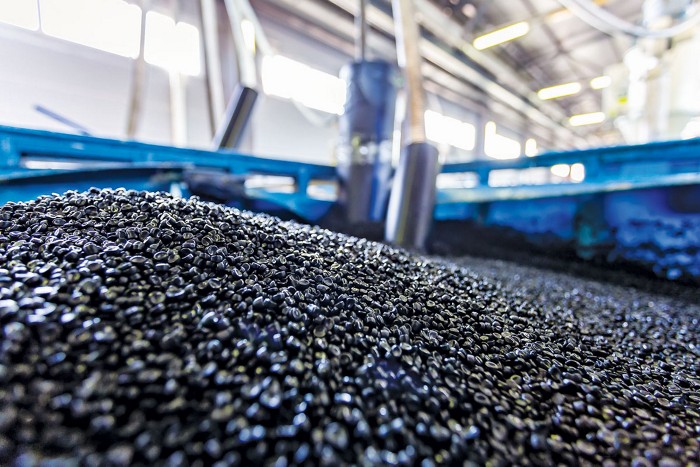Advertisement
Grab your lab coat. Let's get started
Welcome!
Welcome!
Create an account below to get 6 C&EN articles per month, receive newsletters and more - all free.
It seems this is your first time logging in online. Please enter the following information to continue.
As an ACS member you automatically get access to this site. All we need is few more details to create your reading experience.
Not you? Sign in with a different account.
Not you? Sign in with a different account.
ERROR 1
ERROR 1
ERROR 2
ERROR 2
ERROR 2
ERROR 2
ERROR 2
Password and Confirm password must match.
If you have an ACS member number, please enter it here so we can link this account to your membership. (optional)
ERROR 2
ACS values your privacy. By submitting your information, you are gaining access to C&EN and subscribing to our weekly newsletter. We use the information you provide to make your reading experience better, and we will never sell your data to third party members.
Environment
Life Beyond Earth
by David Deamer
October 9, 2006
| A version of this story appeared in
Volume 84, Issue 41
Astrobiology: A Brief Introduction, by Kevin W. Plaxco and Michael Gross, Johns Hopkins University Press, 2006, 272 pages, $65 hardback, $24.95 paperback (ISBN 0-8018-8366)
Some years ago, Theodosius Dobzhansky, a renowned geneticist working at the University of California, Davis, was astonished by the increasing prominence of creationism in American culture. In response, he wrote an essay with a title that is often quoted: "Nothing in biology makes sense except in the light of evolution" (Am. Biol. Teacher 1973, 35, 125).
Two decades later, an opportunity arose to enlarge evolutionary concepts far beyond terrestrial biology when National Aeronautics & Space Administration officials proposed to fund research in a new field to be called "astrobiology." Their vision was largely inspired by public interest in ALH84001, the Antarctic meteorite that, in 1996, was found to possibly contain traces of early life on Mars. The basic principles of astrobiology caught on, and perhaps a thousand scientists worldwide are now engaged in research that would fall under this rubric.
Kevin W. Plaxco and Michael Gross have written a book about astrobiology that provides a general introduction to this new field. Plaxco is a member of the chemistry faculty at the University of California, Santa Barbara, and Gross is a prolific science writer based in Oxford, England, whose other recent books include "Light and Life," "Travels to the Nanoworld," and "Life on the Edge."
But why write about astrobiology? Can there possibly be a rational way to link life to astronomy? We can answer that question by considering two alternative ways to do science. The first is generally referred to as reductionism, the belief that the natural world is a kind of hierarchy, each layer of which can be understood in terms of laws that govern underlying layers. In reductionistic approaches, new knowledge is gained by digging ever deeper into the layers. An important example is that a biological fact such as evolutionary change over time can be understood in terms of mutations in DNA molecules.
The alternative, less common approach to science is to climb above the digging, then look downward on seemingly disconnected observations, watching for patterns to emerge. If they do, the resulting insights can lead to a narrative that unfolds over time. Astrobiology is a perfect example of this approach. That is, life should be understood not just in terms of the chemical and physical principles at work in the biosphere, but also as part of a continuum that includes the history of Earth as a planet, the history of our solar system, and indeed the history of stars and galaxies. To quote Plaxco and Gross: "Astrobiology ... removes the distinction between life on our planet and life elsewhere."
In their preface, the authors define astrobiology by asking three fundamental questions:
"What had to happen to allow the universe to support life?"

"How did the origins and evolution of life transpire on Earth, and how differently might they be transpiring elsewhere?"
"Where else might life have arisen in our Universe, what might it be like, and how can we find it?"
The authors answer these questions in 10 chapters, and the scope of "Astrobiology" is clearly illustrated by the chapter titles: "What is Life?" "Origins of a Habitable Universe," "Origins of a Habitable Planet," "Primordial Soup," "The Spark of Life," "From Molecules to Cells," "A Concise History of Life on Earth," "Life on the Edge," "Habitable Worlds in the Solar System and Beyond," and "The Search for Extraterrestrial Life."
Like many excellent scientific books, this one grew out of a course-in this instance, one taught by Plaxco at UC Santa Barbara. Teaching a course to smart undergraduates puts a whole new perspective on writing a book. Instead of closeting oneself and writing for an audience of one, the process of assembling a series of lectures for a class forces the mind to grapple with ways to explain basic concepts so that an audience can understand them and then to integrate the concepts in such a way that patterns become clear to students. The result is a more cohesive story, and this process has guided the authors of "Astrobiology."
The book is also a virtually complete overview of the field. In 2004, a road map was published by NASA to define astrobiological research goals. "Astrobiology" largely reflects the main themes of that road map, but it is more than just a description of the science. Plaxco is a talented teacher of undergraduate classes, and Gross is an equally talented science writer. Their teamwork has produced a book that is enjoyable to read. The human interest is there, with most chapters beginning with brief stories about real scientists. Footnotes throughout the book also help keep the reader's attention, such as a reference to author Fred Hoyle's "The Black Cloud," a science-fiction novel featuring a form of intelligent life that exists within a dense molecular cloud enveloping the solar system.
An inexpensive book with the subtitle "A Brief Introduction" necessarily has some limitations. The lore of astrobiology is replete with amazing photographs, from molecular clouds and the remains of supernovae to hydrothermal vents and extremophilic organisms, but the book does not have the luxury of color illustrations that would help the reader enjoy such images. And a more complete discussion of energy and self-assembly processes might have been incorporated into the chapter on primordial soup.
But these are minor quibbles. An unusual feature of this book is that the authors include boxed material with the subtitle "Weighing the Probabilities." Here they treat the reader to the pros and cons of arguments about how common (or rare) life might be on other planets???for example, whether as a rich primordial soup like the one Stanley L. Miller and Harold C. Urey found might have existed on early Earth, or as intelligent life. For students in particular, these mini essays show that even though we might not know the answers to such questions, we can certainly use our judgment to constrain possible answers, rather than just give up.
In the quotation that begins this review, Dobzhansky wrote from the perspective of a geneticist, limiting himself to life on Earth. But when we broaden our scope beyond the confines of Earth, we can suggest a modest rewording of Dobzhansky's decree: Nothing makes sense except in the light of astrobiology. I can highly recommend the Plaxco and Gross book as particularly illuminating in this regard, and it is certainly the most readable introduction to astrobiology now available.
David W. Deamer is a research professor in the department of biomolecular engineering at the University of California, Santa Cruz.






Join the conversation
Contact the reporter
Submit a Letter to the Editor for publication
Engage with us on Twitter